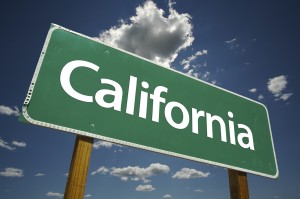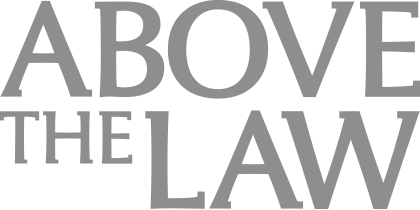A Breakdown Of California Bar Exam Results By Law School (July 2017)
Which in-state law schools did the best on the test, and which schools did the worst?
 Results from the July 2017 administration of the California bar exam were released on November 17, 2017, and on that day, a “celebration of mediocrity” began. Hot off of a 32-year low for its overall passage rate in July 2016, this past summer, almost half of all test-takers passed the state’s notoriously difficult professional entry exam, due, in part, to its new two-day format. The overall passage rate for the July 2017 exam was 49.6 percent (up from 43.07 percent in July 2016), while the passage rate for first-time takers was 62 percent (up from 56 percent in July 2016). Everyone was positively thrilled with this development, ignoring the fact that less than half of those who took the test had passed.
Results from the July 2017 administration of the California bar exam were released on November 17, 2017, and on that day, a “celebration of mediocrity” began. Hot off of a 32-year low for its overall passage rate in July 2016, this past summer, almost half of all test-takers passed the state’s notoriously difficult professional entry exam, due, in part, to its new two-day format. The overall passage rate for the July 2017 exam was 49.6 percent (up from 43.07 percent in July 2016), while the passage rate for first-time takers was 62 percent (up from 56 percent in July 2016). Everyone was positively thrilled with this development, ignoring the fact that less than half of those who took the test had passed.
If something like this had happened in any other state, this narrative would have been much different. Given the fact that so few of those who took the exam were able to pass it, people have been wondering about the pass rates by law school. Until now, the only information we’ve had with regard to law schools has been the overall pass rates for first-time takers who attended ABA-accredited law schools, both in-state (70 percent) and out-of-state (67 percent). A little more than one month has passed, and now we know all of the bar exam pass rates for California law schools, thanks to Pepperdine Law Dean Paul Caron’s own report over at TaxProf Blog.
Which in-state law schools did the best on the test, and which schools did the worst?

Generative AI at Work: Boosting e-Discovery Efficiency for Corporate Legal Teams
Congratulations go out once again to Stanford Law, which has claimed the number-one pass rate for first-time takers for three years in a row, with 96 percent of its graduates passing the exam. Second-place honors go to UC Berkeley, with an 89 percent pass rate for first-timers (up from 84 percent last summer). Well done!
But how did everyone else do?
Here’s a list we’ve created of pass rates for first-time takers on the July 2017 administration of the exam for all 21 ABA-accredited California law schools:
- Stanford: 96 percent
- UC Berkeley: 89 percent
- UCLA: 88 percent
- USC: 88 percent
- UC Irvine: 83 percent
- UC Davis: 79 percent
- Santa Clara: 79 percent
- San Diego: 78 percent
- Loyola (LA): 73 percent
- ABA STATEWIDE AVERAGE: 70 PERCENT
- Pepperdine: 65 percent
- California Western: 65 percent
- Chapman: 64 percent
- McGeorge: 62 percent
- UC Hastings: 61 percent
- Southwestern: 57 percent
- Western State: 56 percent
- San Francisco: 54 percent
- Golden Gate: 51 percent
- La Verne: 41 percent
- Whittier: 38 percent
- Thomas Jefferson: 30 percent
Sponsored


AI Presents Both Opportunities And Risks For Lawyers. Are You Prepared?

Law Firm Business Development Is More Than Relationship Building
Twelve law schools fell below the statewide average pass rate for first-time takers in July 2017, while 11 law schools fell below this bar in July 2016 and nine law schools fell below this bar in July 2015. New to this segment of the list for the most recent California bar exam is Pepperdine (down five percentage points from its 70 percent pass rate in July 2016). This is the first time in years where only two schools saw decreases in their bar exam pass rates from one summer to the next.
Almost every single ABA-accredited law school in California saw its pass rate increase this past summer. So our readers can see the difference in how law schools did in July 2017 compared to July 2016, we created this list of year over year percentage point increases (and decreases) in pass rates by law school. As you can see, some schools experienced “normal” fluctuations of just a few percentage points, while others saw increases in their pass rates that were absolutely, positively insane:
- Stanford: Pass rate increased by 5 percentage points
- UC Berkeley: Pass rate increased by 5 percentage points
- UCLA: Pass rate increased by 6 percentage points
- USC: No change
- UC Irvine: Pass rate increased by 2 percentage points
- UC Davis: Pass rate increased by 7 percentage points
- Santa Clara: Pass rate increased by 13 percentage points
- San Diego: Pass rate increased by 7 percentage points
- Loyola (LA): Pass rate increased by 1 percentage point
- ABA STATEWIDE AVERAGE: 70 PERCENT
- Pepperdine: Pass rate decreased by 5 percentage points
- California Western: Pass rate increased by 4 percentage points
- Chapman: Pass rate increased by 7 percentage points
- McGeorge: Pass rate increased by 1 percentage point
- UC Hastings: Pass rate increased by 10 percentage points
- Southwestern: Pass rate increased by 19 percentage points
- Western State: Pass rate increased by 15 percentage points
- San Francisco: Pass rate increased by 18 percentage points
- Golden Gate: Pass rate increased by 20 percentage points
- La Verne: Pass rate increased by 10 percentage points
- Whittier: Pass rate increased by 16 percentage points
- Thomas Jefferson: Pass rate decreased by 1 percentage point
Many law schools whose ranks typically go unpublished by U.S. News — e.g., Southwestern, Western State, San Francisco, Golden Gate, and La Verne — seem to have benefitted the most from the shortening of California’s exam to two days in length. One of these law schools (Whittier) recently decided to close its doors, due, in part, to its bar pass rates. The one law school within this range that did not improve its pass rate (Thomas Jefferson) was recently found out of compliance with ABA accreditation standards having to do with bar passage, and put on probation.
What are your thoughts on the bar passage rates for California’s law schools? Feel free to contact us by email, by text message (646-820-8477), or by tweet (@ATLblog).
Sponsored

Generative AI at Work: Boosting e-Discovery Efficiency for Corporate Legal Teams

Curbing Client And Talent Loss With Productivity Tech
July 2017 California Bar Exam Results [TaxProf Blog]
 Staci Zaretsky has been an editor at Above the Law since 2011. She’d love to hear from you, so please feel free to email her with any tips, questions, comments, or critiques. You can follow her on Twitter or connect with her on LinkedIn.
Staci Zaretsky has been an editor at Above the Law since 2011. She’d love to hear from you, so please feel free to email her with any tips, questions, comments, or critiques. You can follow her on Twitter or connect with her on LinkedIn.







